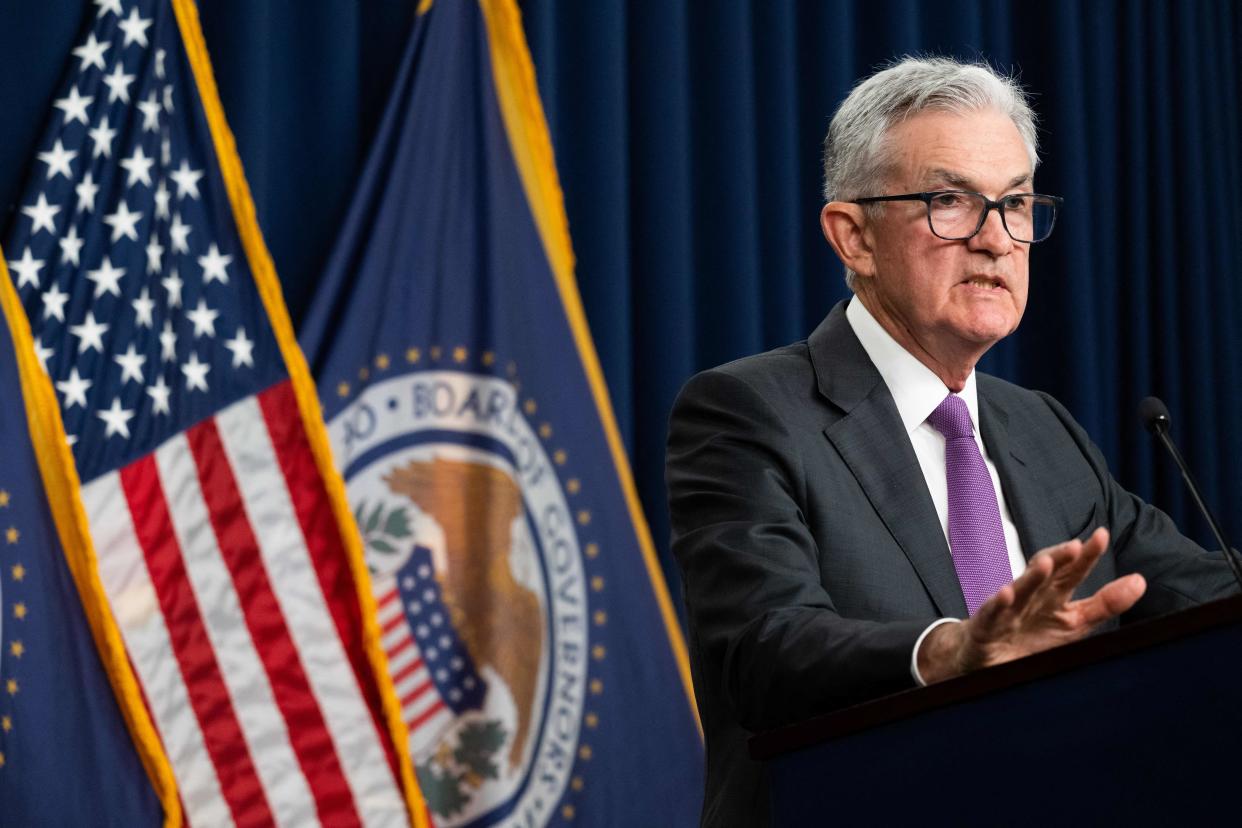#US economy creates 187,000 new jobs in July as labor slowdown continues [Video]
![#US economy creates 187,000 new jobs in July as labor slowdown continues [Video]](https://s.yimg.com/ny/api/res/1.2/We38GZVs5pnMD7X2peQSiw--/YXBwaWQ9aGlnaGxhbmRlcjt3PTEyMDA7aD04MDA-/https://media.zenfs.com/en/aol_yahoo_finance_433/aae2786902c917c62426c2bbcd09cd08)
Table of Contents
The US economy created 187,000 new jobs in July while the unemployment rate fell to 3.5%, the Bureau of Labor Statistics said Friday. Economists had expected job gains to total 200,000 with the unemployment remaining unchanged at 3.6%.
Job gains in July were the least since December 2020. Over the last year, job gains have now averaged 312,000 per month.
Wages, a closely watched indicator of how much leverage workers are exerting in the labor market, rose more than expected last month, rising 0.4% on a monthly basis and 4.4% over last year. Economists expected wages to rise 0.3% over last month and 4.2% over last year.
For the Federal Reserve, the slowdown in hiring is likely a welcome sign as it works to cool the labor market in an effort to tame inflation. Wage gains, however, are likely to signal to some Fed officials that additional rate hikes are needed to limit additional inflation pressures.
“The July jobs report is just one datapoint before the September FOMC meeting, but we think it offers enough evidence of cooling labor market conditions to weigh in favor of no additional rate hikes,” wrote Nancy Vanden Houten, lead US economist at Oxford Economics, in a client note on Friday. “However, an upside surprise in any of the forthcoming data on the labor market and inflation would put another rate hike back on the table.”
The Federal Reserve is set to announce its next monetary policy decision on September 20; last month, the Fed raise its benchmark interest rate by an additional 0.25%, bringing the fed funds rate to its highest level since 2001.
In an interview with Yahoo Finance’s Jennifer Schonberger earlier this week, Chicago Fed president Austan Goolsbee said “nothing is off the table” when it comes to the Fed’s September meeting. Data from the CME Group on Friday showed investors were pricing in a roughly 85% of a pause in the Fed’s rate hikes next month.

Revisions down, cyclicals slow
July’s jobs data also showed the length of the average workweek fell slightly last month, dropping to 34.3 hours from 34.4 hours in June. Labor force participation stood at 62.6% for the fifth-straight month.
Revisions to jobs data from the last two months also reflected more modest hiring than previously reported, with June’s nonfarm payroll gains revised down to 185,000 from the 209,000 initially reported while May’s job gains were cut to 281,000 from 306,000.
By industry, health care and social assistance was by far the biggest job creator last month with 87,100 new roles created in this industry, accounting for nearly half of the total growth in nonfarm payrolls.
Several industries also reported declines in employment last month, including manufacturing, motor vehicles, nondurable goods, transportation & warehousing, and temporary help services. Government jobs increased by 15,000 last month.
In an email on Friday, Paul Ashworth, chief North America economist at Capital Economics, noted that, “cyclical sectors of the economy contributed less than 100,000 additional jobs, pointing to a real economy that, echoing the muted survey-based evidence, is a lot weaker than the pick-up in second-quarter GDP growth suggested.”
“These are softish payroll numbers, especially when taking into account the downward revisions to the prior data,” said Ian Shepherdson, chief economists at Pantheon Macroeconomics.
“Most of the recent softening is in services, with the trends in leisure/hospitality and — ominously — temporary hiring weakening markedly…The big picture here is that the wave of post-Covid catch-up hiring now appears to be over, and modest downward cyclical pressure is now the dominant force in payrolls.”
Click here for the latest stock market news and in-depth analysis, including events that move stocks
Read the latest financial and business news from Yahoo Finance
If you liked the article, do not forget to share it with your friends. Follow us on Google News too, click on the star and choose us from your favorites.
For forums sites go to Forum.BuradaBiliyorum.Com
If you want to read more News articles, you can visit our News category.




